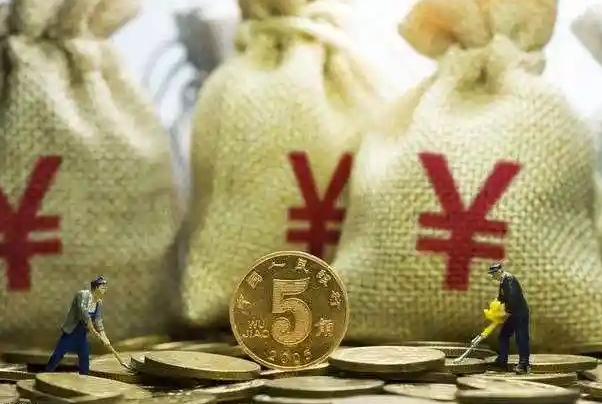Accelerated Lithium Mining for Energy Security
Advertisements
In recent years, the global economy has faced numerous challenges due to fluctuating prices and supply chain disruptions, particularly in the resource sectors. Yet, amid these challenges lies a silver lining, particularly in the lithium market. As industries related to new energy vehicles (NEVs) and energy storage continue to grow, Chinese lithium mining enterprises are steadfastly pursuing resource development, even as lithium prices hover at low levels.
On November 17, 2023, Guocheng Mining's wholly-owned subsidiary, Guocheng Lithium Industry, celebrated the groundbreaking ceremony of its 200,000 tons per year lithium salt project in the Sichuan Mianzhu New Materials Chemical Park. This development comes shortly after Chuaneng Power disclosed that construction of the Lijiagou lithium mine project was nearing completion. Such rapid advancements in the lithium sector highlight the confidence and consensus among industry insiders regarding the accelerated development of domestic lithium resources fueled by the burgeoning NEV and energy storage markets.
Industry experts emphasize that the ability for supply chain companies to access more upstream resources enhances their confidence and readiness for future growth. Unlike the uncertainties associated with overseas mining, accelerating domestic lithium mining operations is crucial for enhancing production capabilities and establishing a reliable local supply chain. The recent surge in the stock price of Guocheng Mining indicates the market's recognition of its new lithium salt project, exemplifying the optimistic sentiment prevailing in the sector. At the end of December 2022, Guocheng Mining partnered with the Mianzhu municipal government to invest around 10.5 billion RMB in a lithium salt project divided into three phases, aiming for a production capacity of 200,000 tons once completed, with an expected annual output value of 50 billion RMB.
Additionally, the Lijiagou lithium mine development by Chuaneng Power is also seeing fruitful progress. Announcing significant advancements in mid-October, the company indicated that the engineering construction was close to completion, with plans to begin trial operations in the fourth quarter and reach designed capacity by 2025. Exciting developments have also emerged with Huirong Mining, a stakeholding company that recently obtained a mining license for the Murong lithium mine, paving the way for upcoming construction and swift progress towards production.
Other companies like Tibet Mining are reaching their milestone projects as well. By the end of June, they initiated trial production at the Zabuye Phase II project, predicted to yield an additional 9,600 tons of battery-grade lithium carbonate annually, alongside 2,400 tons of industrial-grade lithium carbonate. The domestic push for resource development is echoed in the overseas investment arena, with Yaohua Group announcing the successful commencement of full production at the Kamativi lithium mine project in Zimbabwe, which will handle 2.3 million tons of lithium ore annually, yielding 350,000 tons of lithium concentrate.

The contemporary drive in the lithium sector can be traced back to the explosive growth in demand that began around 2021 when downstream industries surged, further spurred by soaring lithium prices. Many mining companies began investing heavily in resource acquisitions, predicting that by 2025, domestic lithium mining capacity would see significant increases. The first three quarters of this year saw an approximate lithium carbonate production of 450,000 tons in China, coupled with a staggering 48.7% year-over-year hike in lithium imports, emphasizing the critical need for local resource development as the NEV and energy storage sectors expand.
However, challenges loom in the form of uncertainties tied to overseas mining operations. Events this year have exposed vulnerabilities with significant companies like Tianqi Lithium experiencing weakened investment rights in Chile’s Atacama salt flat and Ganfeng Lithium facing a cancellation of its mining license in Mexico. These occurrences underscore the need for China to bolster its domestic lithium resource capabilities in light of increasing difficulties abroad. With major overseas lithium reserves increasingly becoming nationalized and regulated, domestic firms face greater challenges as they venture overseas for resource acquisition.
Experts point to a fierce competition for lithium resources as the global transition towards renewable energy accelerates. There is a pressing need for local companies to enhance lithium self-sufficiency rates and reduce operational costs due to the dominance of high-quality resources in foreign hands. Amidst such uncertainties, industry leaders urge for swift and safe advancement of domestic lithium projects while optimizing the overall industry layout.
As the landscape of lithium resource development shifts, integrated enterprises stand at the cusp of breakthroughs. These businesses, capable of managing everything from resource extraction to lithium salt production, boast a competitive edge. With lithium prices pulling back, processing sector profits are tightening, leading to harsh realities for those dependent on external lithium sources. Companies like Guocheng Mining benefit significantly from their vertically integrated model, relying on their subsidiary, Jinxin Mining, for resource supplies. Within its mining rights, Jinxin Mining stores over 50 million tons of lithium ores, with an estimated production cost of lithium concentrate well below 50,000 RMB per ton.
Moreover, salt lake lithium extraction processes, particularly in regions like Qinghai and Tibet, present economically viable avenues, with operation costs hovering between 30,000 RMB and 40,000 RMB per ton. Companies such as Tibet Mining and Salt Lake Co. are thus positioned with strong competitive advantages. The ongoing changes in the lithium mining sector hint at a possible new paradigm; enhanced resource self-sufficiency is key to maintaining competitiveness in challenging market conditions.
In conclusion, China's lithium mining industry is experiencing a dynamic transformation characterized by rapid domestic development, a strong push for self-sufficiency, and the challenges of international competition. As the push for electric vehicles and energy storage systems continues to gather momentum, the need for reliable, local lithium resources has never been clearer. Integration and innovation will shape the future of the industry, underscoring the critical balancing act between resource acquisition, cost management, and ecological responsibility.